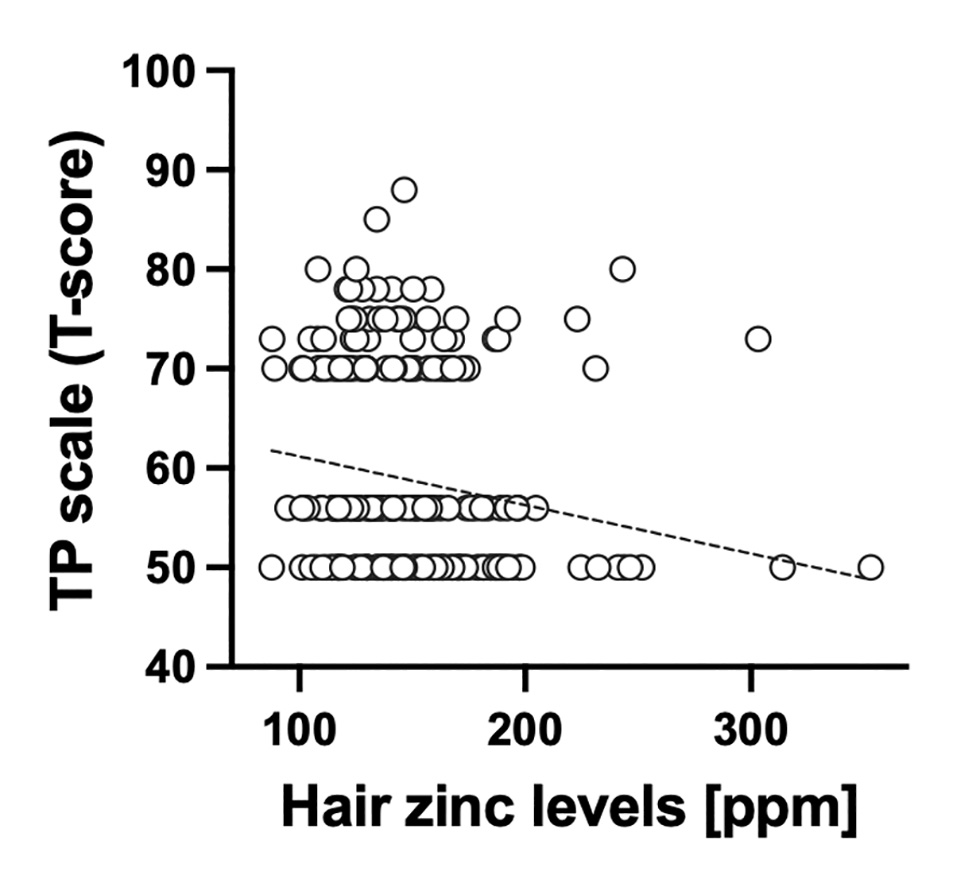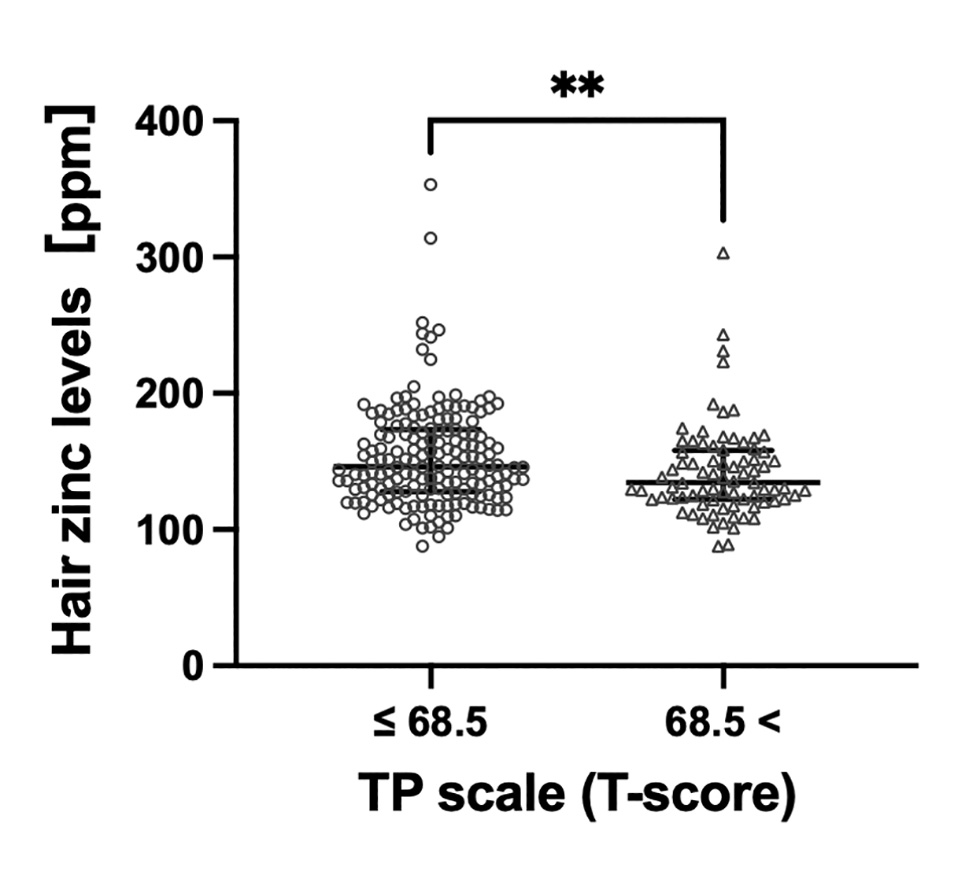
Recent meta-analyses have shown lower zinc and higher copper levels in the serum of people with schizophrenia than those in healthy controls. However, the relationship between trace elements and the pathophysiology of psychosis, including schizophrenia, remains unclear due to the possible effects of antipsychotic effects on mineral levels. In this study, we aimed to determine the relationship between zinc and copper levels in hair and psychosis risk among drug-naïve adolescents.
Regression analysis showed that hair zinc levels were negatively correlated with the TP scale (T-score) (β = -0.176, P = 0.005). In contrast, hair copper levels were not associated with the TP scale (T-score) (β = 0.026, P = 0.687). Figure 1 shows the correlation of the TP scale (T-score) with hair zinc levels.
According to a previous study, a T-score of the TP scale > 68.5 is considered the cut-off for psychosis. As shown in Figure 2, the hair zinc levels of the participants with the TP scale (T-score) > 68.5 were significantly lower than those of the other participants with the TP scale (T-score) ≤ 68.5 (P < 0.01).


In a population-based birth cohort study of adolescents, lower hair zinc levels could be associated with psychosis risk among drug-naïve adolescents, suggesting its involvement in the pathophysiology of psychosis, independent of antipsychotics. Further longitudinal studies are required to investigate hair zinc level as a new biomarker for assessing psychosis risk.